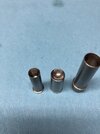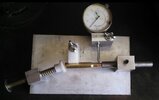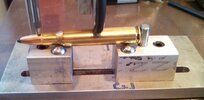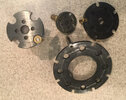MarshallDodge
Member
That is what I wanted to confirm, the OAL variance is not seating die related.Sure if you are loading on a single stage.
But I was loading on progressive presses in full progressive mode with shellplates full using unsorted range brass by case length.With differing resizing efforts from various brand headstamp with differing brass alloy, case wall thickness, case lengths, etc., force applied to bullet seating die can vary factoring shellplate tilt/deflection to produce OAL variance.
Dillon 550 differs from other progressive presses like 650/750 in that shellplate does not capture the base of case rather pushes/slides cases on top of the platform which does not move. So differing resizing force on shellplate does not affect force on bullet seating die to act like a single stage when bullet is seated, producing more consistent OAL. Starting with Lee ABLP and continued on SPP and 2023 Pro 1K; while shellplates capture case base, "free-floating" shellplate design is utilized so during resizing or any force applied to the shellplate, shellplate simply drops down flat on solid carrier similar to 550 platform, which I attribute to producing .001" OAL variance that is hard to do with progressive press running in progressive mode with full shellplate using unsorted range brass by case length.
There are several precision rifle shooters- myself included, that load rifle ammo on a Dillon 550, and see results worthy of winning matches. I won't say it does as good a job as a single stage press with a quality die, or a Wilson arbor seater, but I'm not measuring groups down to .001"






